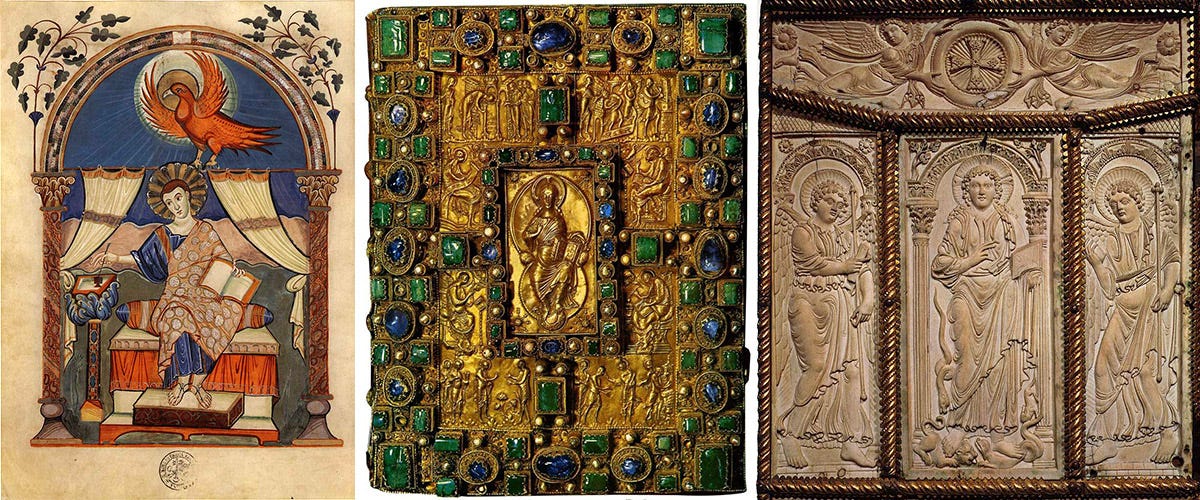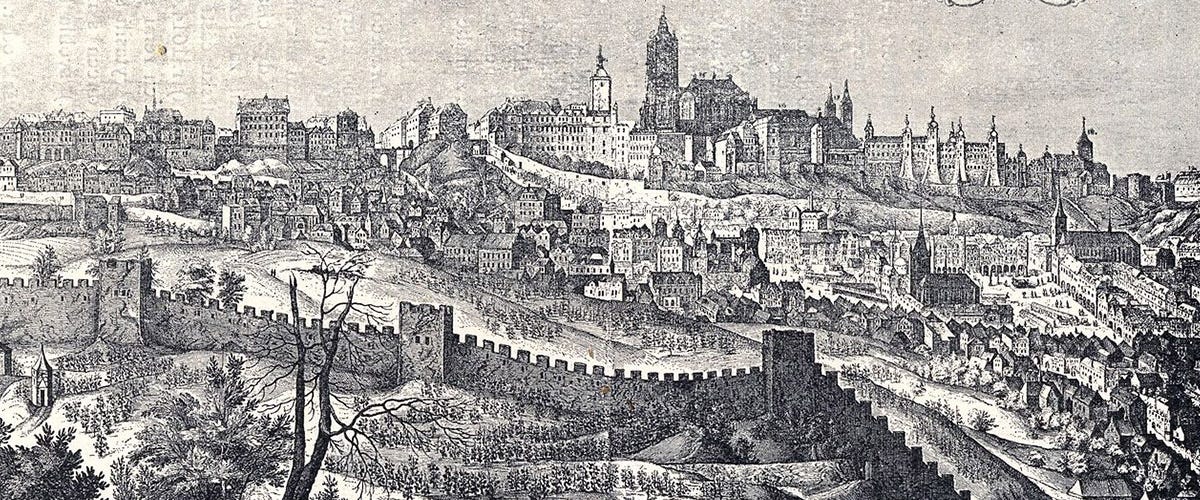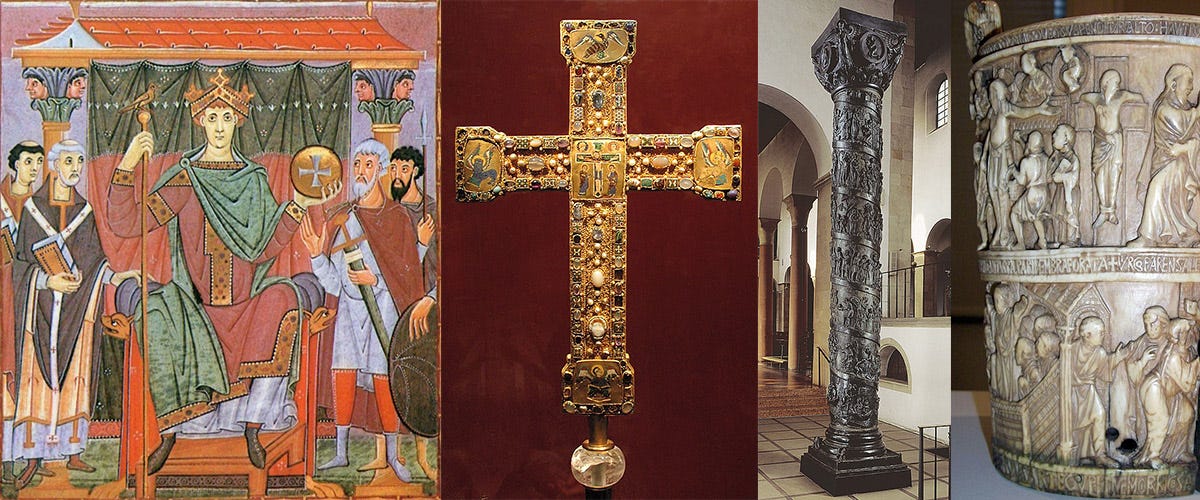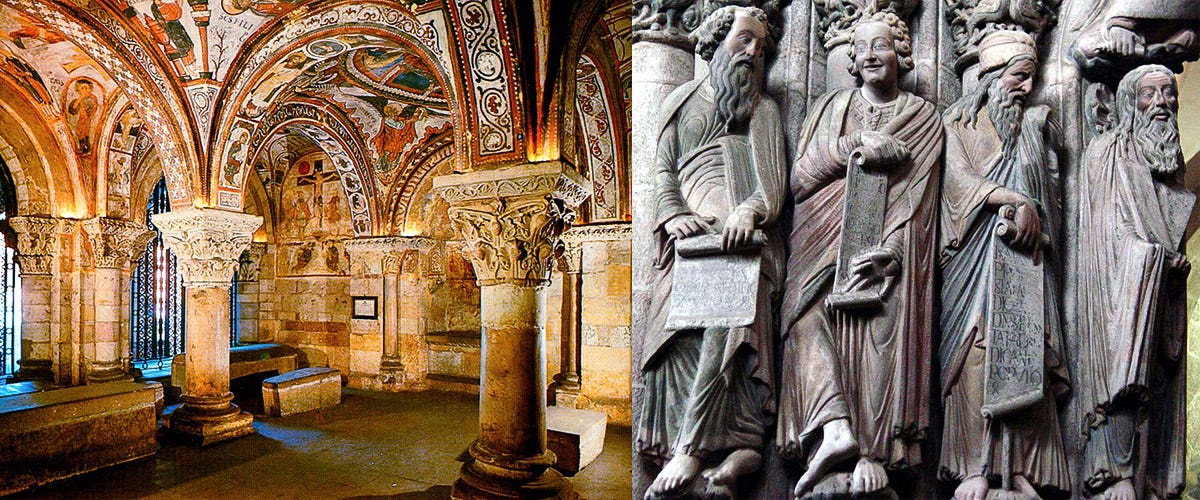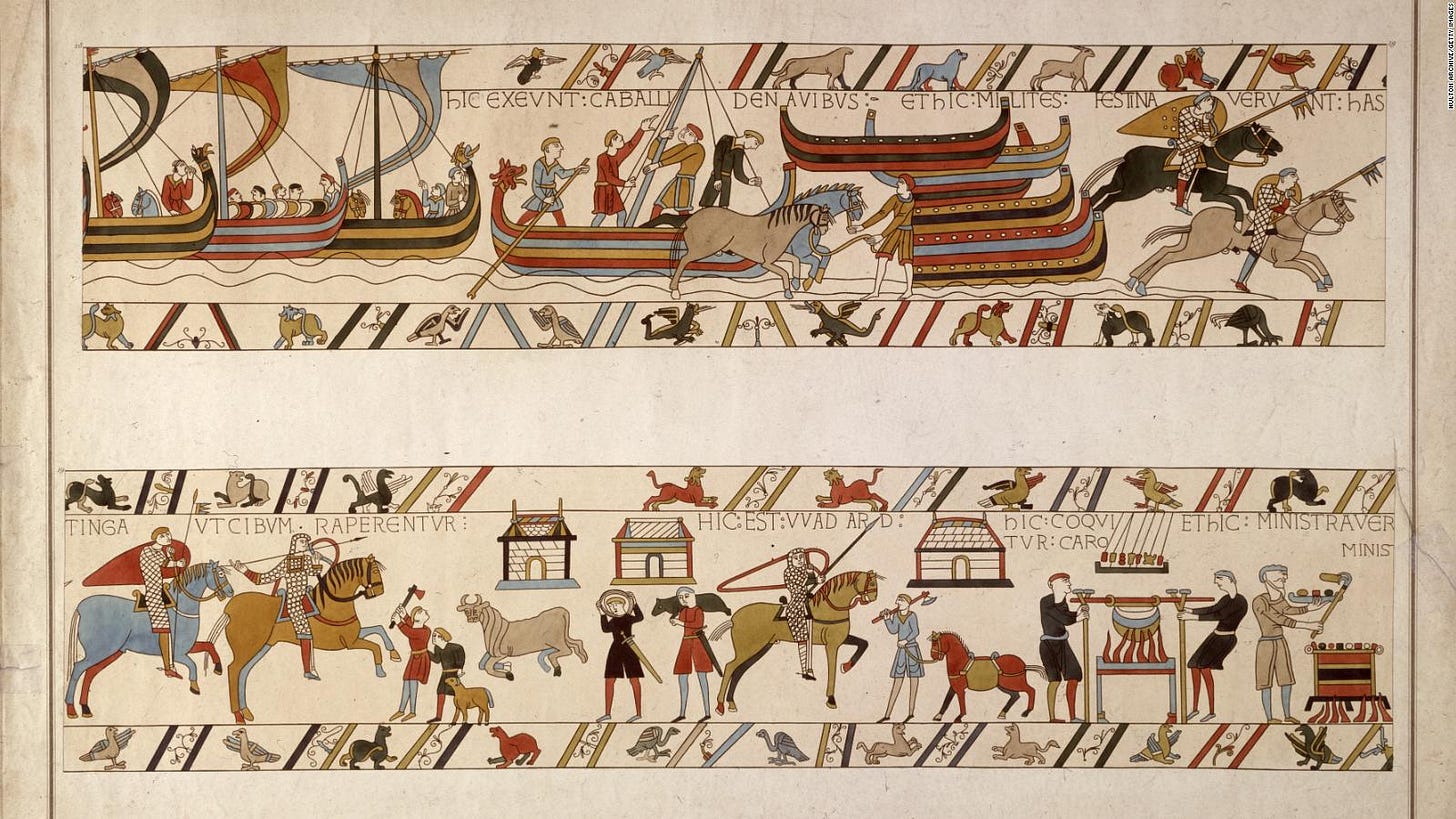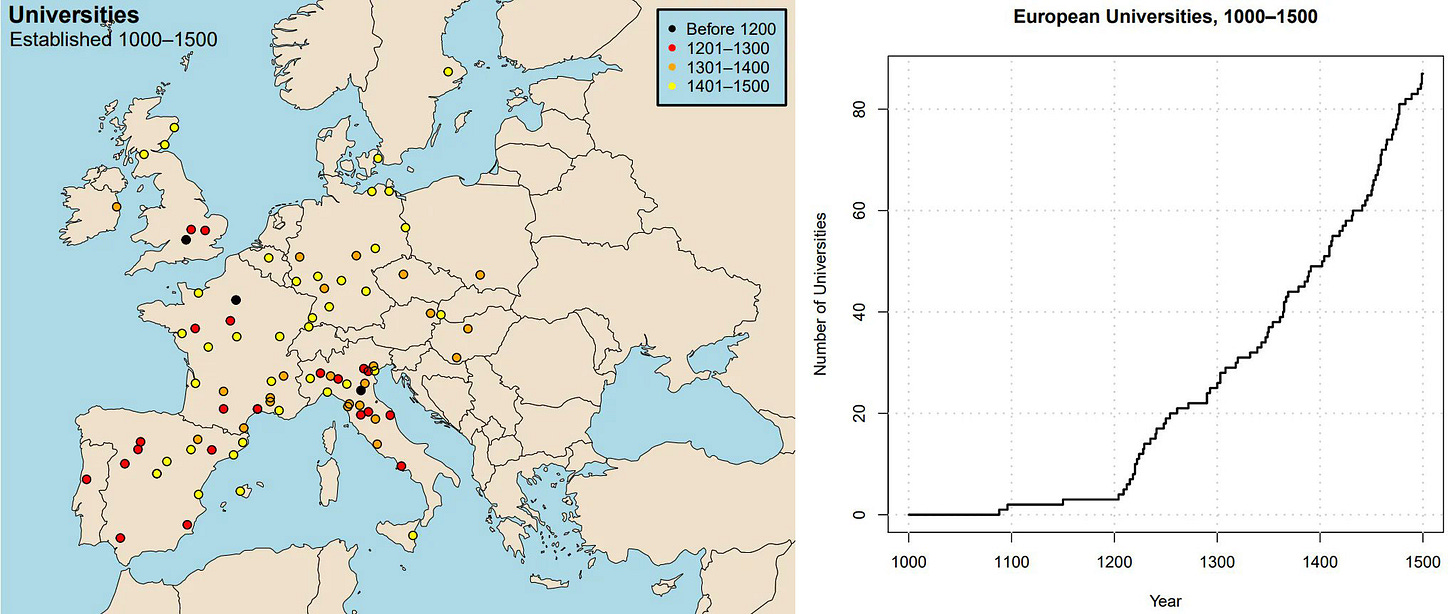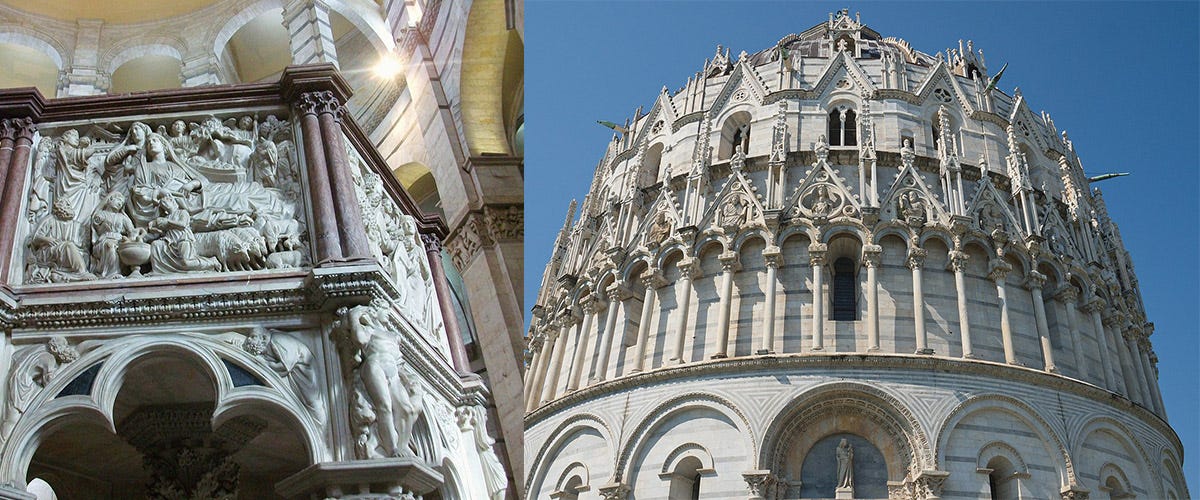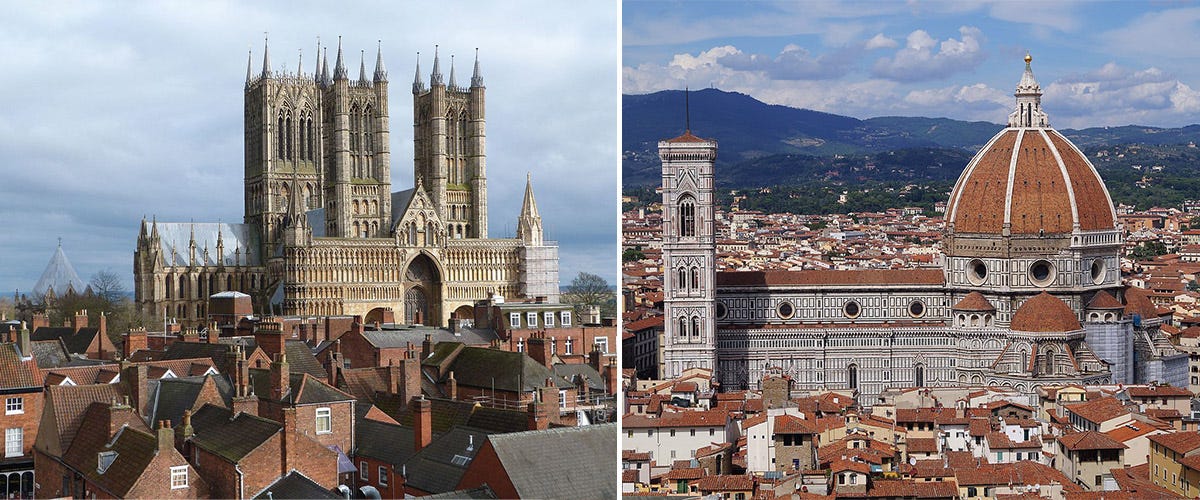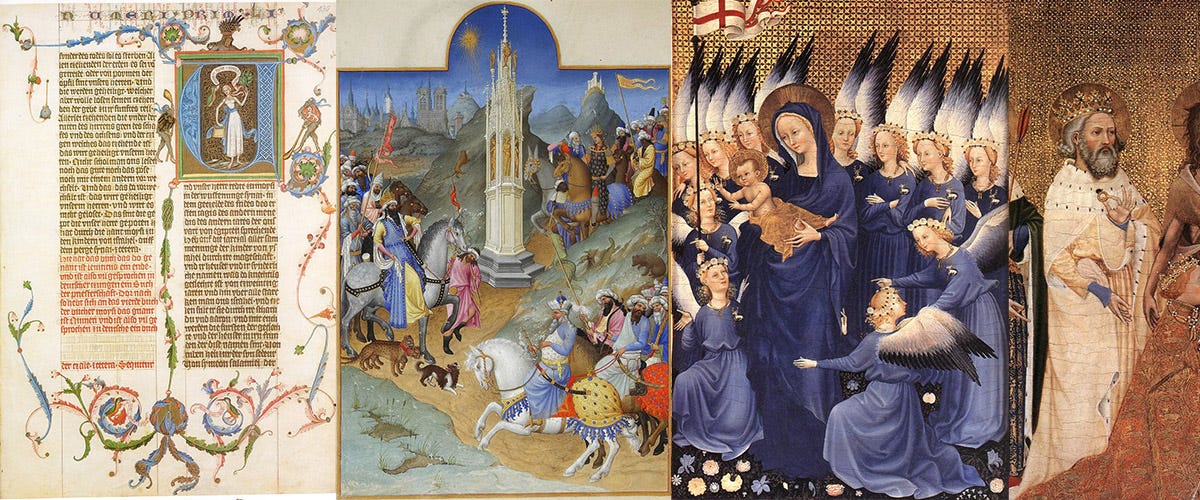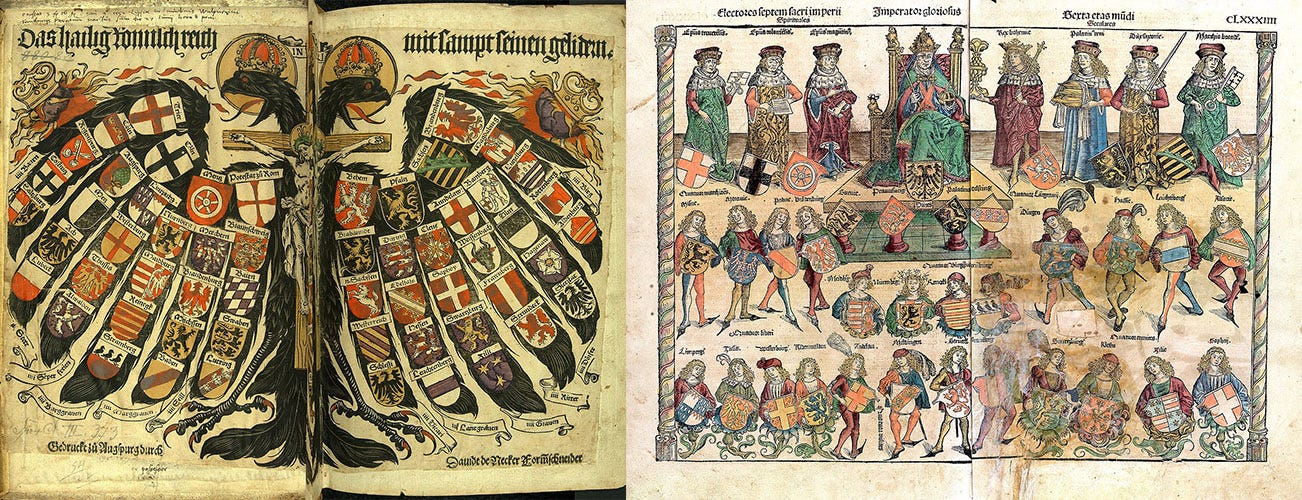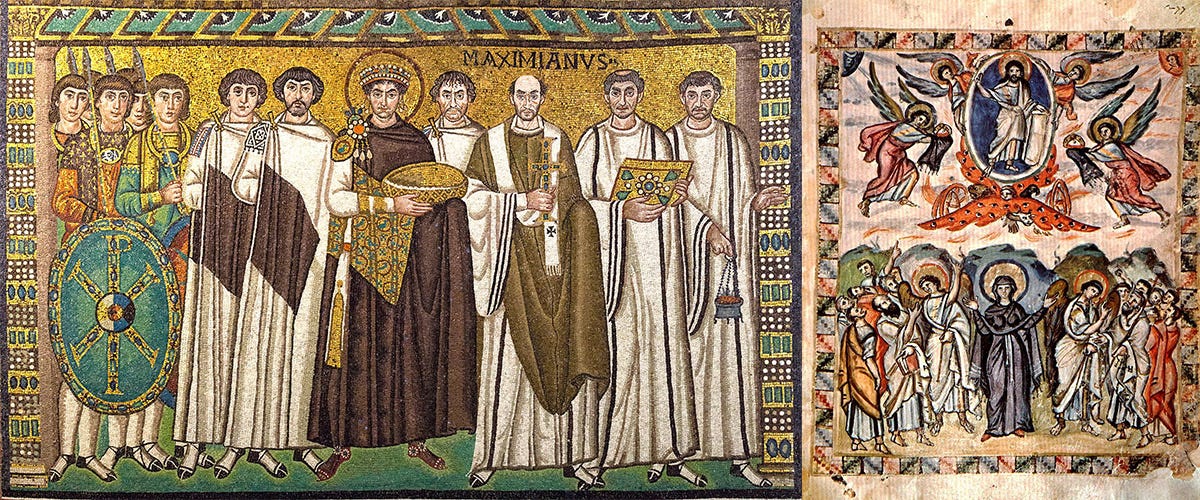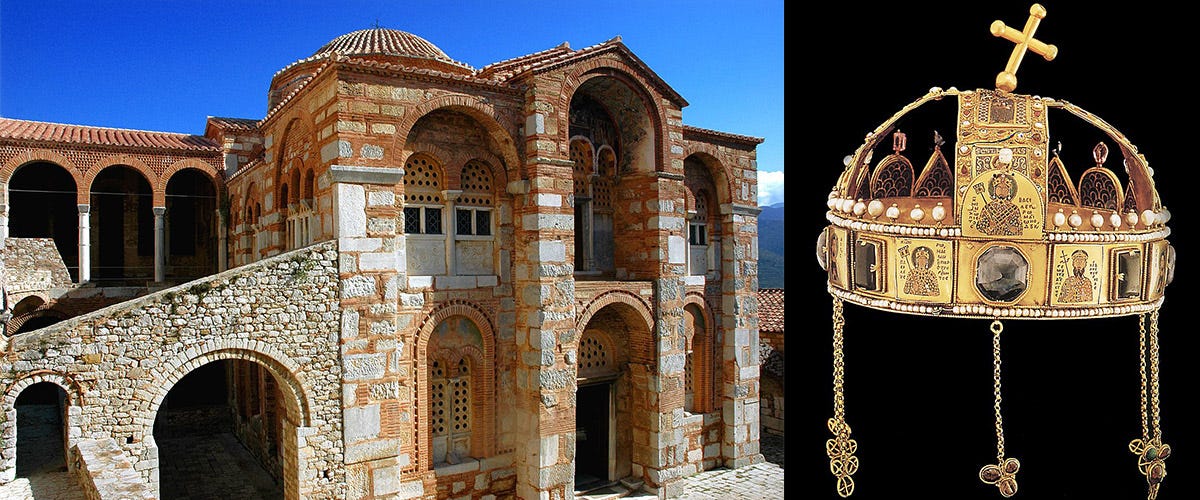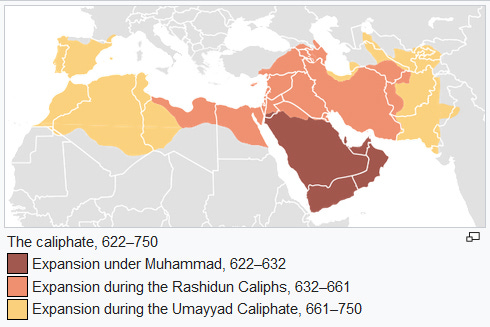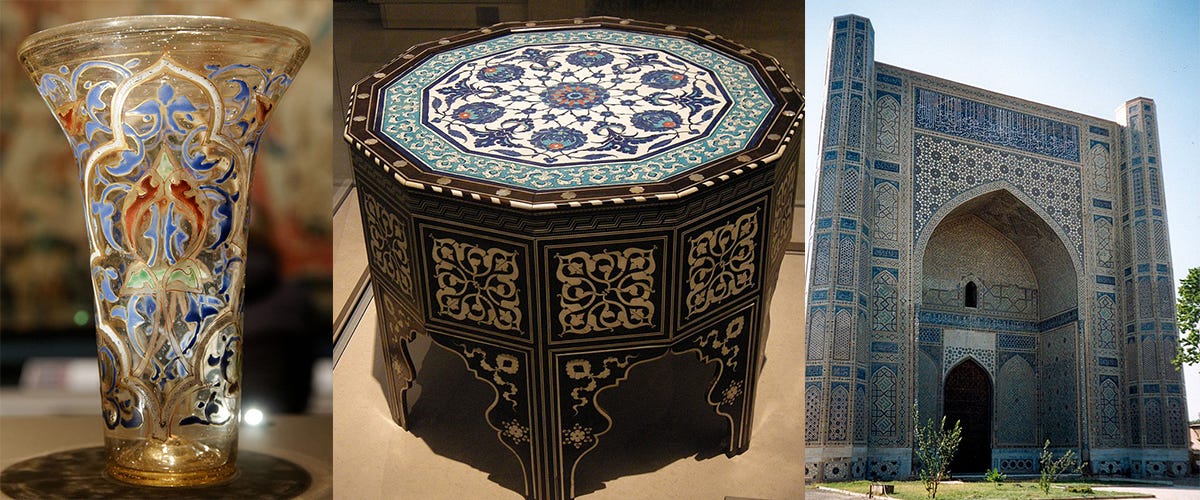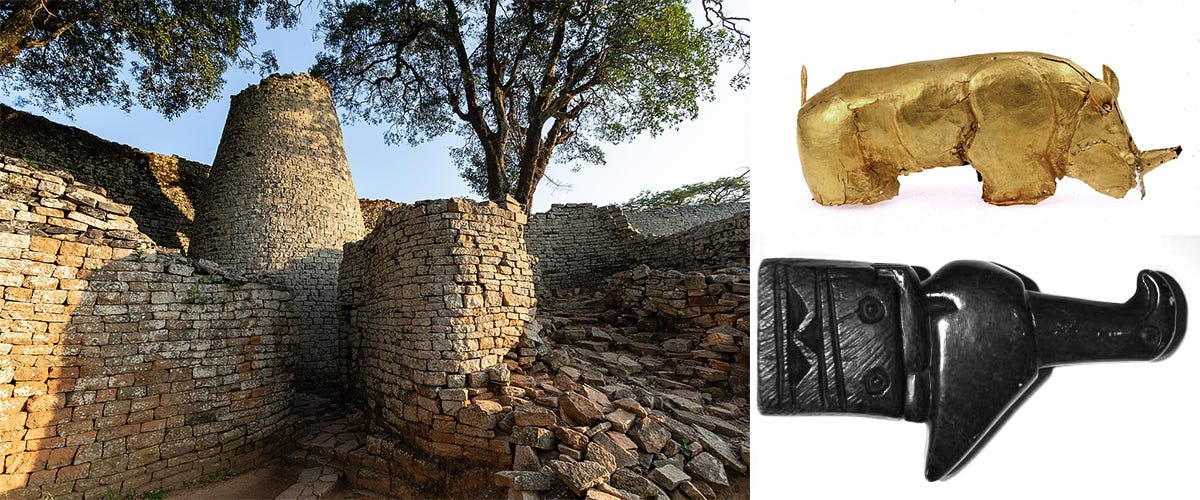Introduction to Western Medieval Art: Art History 101
A brief timeline of Western art in the Middle Ages (about 400 AD to 1500 AD)
Previously we discussed art in the Iron Age, including the Roman Empire:
Medieval art covers the thousand-year period between the Roman Empire’s collapse and the Renaissance. This is also why we call it “the Middle Ages;” because Renaissance-era Europe believed their era—and the Greco-Roman era—was the height of human accomplishment. They largely disregarded the “barbaric” era in the middle of these. This stereotype persists even to the present day, even though the human race has always done great things.
We can divide the Middle Ages into three categories:
Early Middle Ages (400-1000)
Merovingian, Carolingian, and Ottonian art
High Middle Ages (1000-1300)
Romanesque and Gothic art
Late Middle Ages (1300-1500)
International Gothic
And throughout all of these periods, more or less, Byzantine and Islamic art flourished.
Medieval art was generally religious. This included illuminated manuscripts, stained glass windows, reliquaries, and altarpieces. They used more rare materials like gold and gemstones. While the ancient Greeks and Romans made strides in secular works, the Middle Ages is characterized more by the expansion of Christianity and Islam. Christianity had gained significant ground just before the Roman Empire’s collapse, even becoming the state religion. Islam was founded around 600 AD and soon became its main competitor.
Architecture and other art forms became increasingly complex and elegant over the centuries. This was a time of great upheaval. Increased trade and awareness of other cultures, empires rising and falling, and more. The Catholic Church was one of the few stable institutions and this influence is easily seen in Medieval art. Churches and monasteries also served as centers of power and wealth. Some people used them as banks and stored family heirlooms there. Secular or pagan art was less likely to be created and less likely to survive the ages.
Early Middle Ages (400-1000)
After the fall of Rome, one of the first major powers to emerge was the Merovingian dynasty, covering most of West/Central Europe. The name comes from King Merovech, said to be the ruler of a barbarian tribe who allied with the late Roman Empire.
The Carolingian Empire (800-888) came next, named after Charlemagne, the founder of the cultural institution known as the Holy Roman Empire (800-1806). Charlemagne felt an affinity with the Roman Empire—and as he acquired wealth and power, he wanted to match their artistic output.
Fun fact: every living person of European descent is allegedly related to Emperor Charlemagne. His family was… prolific. Direct descendants include Sir Christopher Lee, who went on to record metal albums about Charlemagne.
Feudalism developed in the late 800s/early 900s as invasions and raids intensified. Centralized powers weakened and looked to decentralize in response. Vassals would receive land, and in return, owed their lord military service and/or taxes to fund his war chest. The entire system was based on reciprocity. Symbiotic relations between lower and upper classes. Power began to be delegated throughout kingdoms since a single central authority could no longer muster an adequate defense. Especially when attacked on all sides—where do you put your slow-moving troops?
The Vikings flourished during this time, with “the Viking Age” between approximately 800 and 1100 AD.
Part of Viking success was speed. Longships could navigate rivers and coasts 5-10 times faster than a land-based army. They'd appear out of nowhere, overwhelm local defenses, and vanish long before reinforcements could arrive. Paris was famously besieged at least four times in the 800s.
Vikings were large and skilled (higher-protein diet and training since childhood) and had less gear than opponents (only 30-40 lbs of weapons and armor) for greater strength and agility. Plus they often went for easy targets like monasteries.
(Side note: I’ll cover Viking art and culture separately since they deserve their own article. TBD.)
Such assaults were deeply traumatic for Europe. They didn’t influence art much, yet they did influence architecture and culture.
After the fall of the Carolingians, the earliest castles began to be built. Regional instability and foreign invasion necessitated fortresses which could be used for both offense and defense. These were originally primitive designs of wood and earth located in naturally defensible positions. It wasn’t until later that stone and other more durable materials were used for our modern castle stereotype.
An earthwork fortress needed dozens of people, but stone castles needed thousands. Many of these old fortresses were rebuilt multiple times, and continually expanded, to reach their present state. Prague Castle is one of the first (880) and is the largest castle in the world. Other early castles include William the Conqueror’s Warwick Castle (1068) and Windsor Castle (1070). Early architects included James of Saint George.
Ottonian art is named after Emperor Otto the Great (962-972) who became successor to the Holy Roman Empire after a period of turmoil. Under Otto, there was significant interest in art from the Carolingians, Byzantines, and Italians. Major Ottonian works included the Gero Crucifix (965-970) and The Codex Egberti (977-993).
High Middle Ages (1000-1300)
“Romanesque” art stems from, as one might expect, the Roman Empire’s influence (including Byzantine art), while incorporating local Frankish and Germanic styles. It began gaining popularity around 1000 AD and is found in many regions of Europe. Sculpture made a strong comeback, including relief carvings. Architecture was thicc and stylized.
The Crusades opened a window back to the Near East, starting with the First Crusade of 1096-1099. European artists and craftsmen acquired influences from Byzantine and Islamic art.
The Anglo-Saxon Bayeux Tapestry is one of the most famous works from the 11th century. The distinctive embroidered cloth measures an astounding 230 feet long (70 meters) and tells an epic story. Here’s one small section:
Gothic architecture and sculpture emerged around 1144-1155 AD in France. It had no connection to the barbarian group known as the Goths, and wasn’t called “gothic” at the time—that came hundreds of years later. It emphasized thinner and more elegant forms in architecture, almost weightless in comparison to older styles.
Originally known as Opus Francigenum (“French work”), new architectural techniques like the flying buttress allowed buildings to reach great heights, pointing towards Heaven itself. Walls became less important as a structural feature, since stress was spread over more concentrated areas. Artists experimented with getting more light inside (especially important in Northern Europe, not so much the Mediterranean) and stained glass was one solution.
The windows of Augsburg Cathedral in Germany (1065) are among the earliest stained glass pieces. Chartres Cathedral (1194-1250) is among the most magnificent and originally had 176 stained glass windows. The stories told by stained glass windows were especially important as visual aids in a time when most people were illiterate.
Early works included the choir at the Abbey of Saint-Denis, and the Royal Portal at Chartres Cathedral. Other well-known examples include the Psalter of St. Louis (1260-1270) and Melchior Broederlam’s altarpiece for Philip the Bold (1394-1399).
The oldest European universities were founded around this time. This included the University of Bologna (1088-1190), University of Oxford (1167-1214), and University of Salamanca (1218-1219). Curriculum focused on both arts and sciences, and was a big step toward the furthering of Western Civilization as a whole.
Nicola Pisano was one artist who looked back to ancient Greece and Rome, and sought to incorporate those traditions in contemporary Christian-themed work, especially after ~1245 when he moved to Pisa. His son continued his work, as did other sculptors.
Widespread catastrophe began to set in at this point.
The Mongols reached Europe in 1240-1241, over a decade after the death of Genghis Khan (Temüjin) in 1227. Their invasion lasted for a year until Mongolian forces retreated. Several possible factors went into the decision to withdraw, including the death of Ögedei Khan. After a few sparse raids, they returned in force, attacking Lithuania and Poland in 1259. Attacks continued until about 1300. European powers launched counter-invasions as the Mongol Empire weakened. By 1368 they no longer had a significant presence in Europe, and by some accounts, that year marked the end of their empire.
Late Middle Ages (1300-1500)
Even more disasters struck Europe after the Mongols. Famine, plague, changes in climate, and social unrest.
These problems included:
The Little Ice Age (~1300)
The Great Famine of 1315-1317
The Byzantine Civil War (1341-1347)
The Black Death (1346-1353) plus many recurrences between 1360 and 1667
The Hundred Years' War (1337-1453)
The Great Schism (1378-1417)
The Fall of the Byzantine Empire (1453)
The War of the Roses (1455-1487)
Within a couple of generations, the European population was sliced in half. (Estimates vary widely.) As one would expect, this caused radical cultural shifts.
Military power and technology shifted too. Knights fell out of favor as longbows became common and the cannon was introduced in the 1300s. The first firearm with a trigger was invented in 1475. Between the 1500s and 1600s, armies introduced guns en masse. Cavalry replaced their lances with these new tools, and the first bayonet was invented in the Ottoman Empire.
The Silk Road kept connections alive between Europe and the Far East, as did stories about the travels of Marco Polo (1271-1295). This included the time when the Mongols controlled it. The Road was closed when the Byzantine Empire fell in 1453. This had a major influence on the Age of Discovery, as European merchants searched for ways to reconnect. They turned from land to sea.
Increased European wealth and artistic skill is most evident in the grandest castles and churches of Medieval architecture.
The Lincoln Cathedral, completed in 1311, was the tallest building in the world until 1884. The Florence Cathedral, completed in 1436, has the largest brick dome in the world. Winchester Cathedral, when completed in 1532, was the longest cathedral in the world until St. Peter’s Basilica was built in Italy.
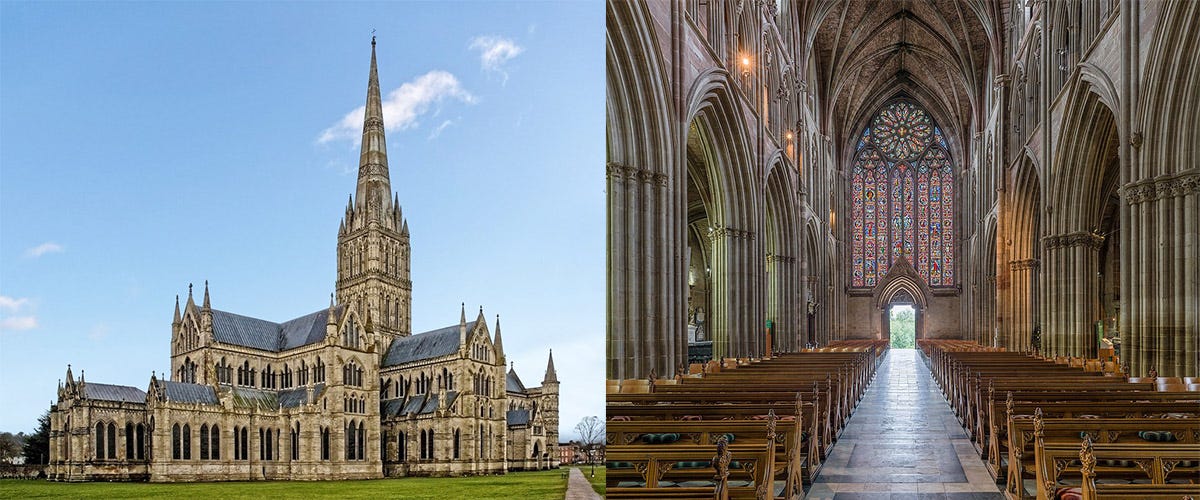
International Gothic (1375-1425) was one of the last art styles before the Renaissance came about in full force. It spread mostly among royals in Western Europe and is known for vibrant colors, flowing lines, slender bodies, and floral themes. Early works included Annunciation (1333) by Simone Martini and the Wilton Diptych (1395-1397) by an anonymous artist. A later example is the The Adoration of the Magi altarpiece in the Strozzi chapel.
Let’s not forget the Holy Roman Empire either:
And, lastly, one of the world’s most important inventions: Johannes Gutenberg’s printing press went into operation in the mid-1400s. In less than a century, printing presses churned out over 20 million books, sparking a revolution in literacy and education. Fully mechanical clocks were another important invention.
For more about “the rise of the West,” here’s another Substack with good information:
Byzantine Art
The Byzantine Empire’s art is notably different from the rest of Europe due to its Hellenic and Near East influences. Mosaics are especially well-known, as is their use of gold and silver in many pieces. Byzantine artwork began to have greater effect on European art after Constantinople was retaken in 1204, and cultural exchange could take place uninterrupted.
Side note: there’s an argument that the Byzantine Empire began in 330 AD when Constantinople became the Roman Empire’s new capital. Others put 395-476 AD as the start date since that’s when the unified Roman Empire came to an end.
The Early Byzantine era included the Justinian Dynasty (518-602) and a Dark Age that lasted for about 200 years. Also see: the Byzantine–Sasanian War of 602–628.
Although their power was much diminished after Justinian, there was a comeback. The “Middle” Byzantine era ran from about 717 to 1204. This included the Macedonian Renaissance (867-1056) followed by a series of civil wars.
The Crown of Saint Stephen (1070) is of Byzantine design and made for the first king of Hungary.
After the end of the Komnenian Dynasty (1081-1185) we come to the decline and fall of the Byzantine Empire (1204-1453).
The Ottoman Empire took Constantinople in 1453 and it hasn’t been part of Europe since.
Medieval Near East and Africa
The Near East was quickly dominated by Islamic modes of thought as Muslim armies created an empire.
Early Islamic art didn’t have specific rules and generally stuck with local traditions. Although not strictly forbidden by the Qur’an, artists were discouraged from creating figurative art. To “breathe life” is allegedly meant to be a power God alone should hold, and may distract from spiritual focus. This is also where imagery of God and Muhammad became banned, as we know today.
Because of these restrictions, Islamic art brought a focus on non-figurative art: calligraphy, geometry, plant-inspired designs, and repeating patterns. Geometry was based on mathematics from ancient cultures like that of Babylon and Greece. Greek artists, as we’ve seen, believed there were aesthetic principles in math.
The “golden age” of Islamic art began to end in the 15th century, although artistic concepts were passed between the Islamic world and European world. And less desirable things too. Like Medieval Europe, the Black Death terrorized the Islamic world, although for much longer. Plague wasn’t considered gone until as late as 1850.
Notable areas within Medieval Sub-Saharan Africa include Great Zimbabwe and the Kingdom of Mapungubwe, both of which collapsed by 1500. Their mortarless stone constructions are still visible today, as ruins, across modern-day Mozambique and Zimbabwe.
Next: The Renaissance and Early Globalism
The Medieval era was vast and complex, encompassing multiple cultures and regions. Although this is just a brief overview (as brief as 2300 words can be) I plan to go more in-depth in the future on other details.
Europe is responsible for creating or influencing nearly all art forms after the Medieval era. Once Europe began to colonize the globe, they left their marks on basically every culture. In some cases, they destroyed the works of the conquered people. Disentangling indigenous art from European art is a fairly recent invention.
Historians typically say “the Modern Age” begins in 1500 AD, although it begins later in the art world (there are various debates over when exactly, and I’d say 1900). But more on that next time.
This is a reader-supported publication. For further support of my work:
I sell physical artwork and journals at ApolloGallery.org with more to come
I have a masterlist of 100+ AI-related tools for increasing efficiency
You can hire me for graphic design work
And if you don’t already know, I’m on both Twitter and Instagram




